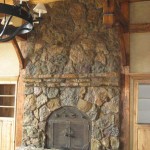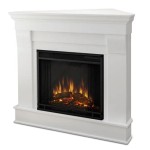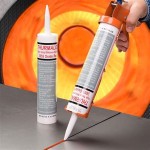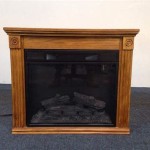Ceramic Outdoor Fireplaces: A Comprehensive Guide
Ceramic outdoor fireplaces offer a blend of functionality and aesthetic appeal, transforming patios and gardens into inviting gathering spaces. Constructed primarily from ceramic materials, these fireplaces provide warmth, ambiance, and a focal point for outdoor living areas. Their construction, design variations, and considerations for safety and maintenance necessitate a thorough understanding for prospective buyers and current owners.
The term "ceramic" in this context refers to a broad range of materials, including clay, earthenware, terracotta, and porcelain, all of which are hardened by firing at high temperatures. The specific type of ceramic used dictates the fireplace's durability, heat resistance, and aesthetic properties. While some fireplaces may be entirely ceramic, others may incorporate metal components for structural support or enhanced functionality.
The popularity of ceramic outdoor fireplaces stems from their ability to seamlessly integrate into various outdoor design schemes. Their natural, earthy tones complement landscaping, while their diverse shapes and styles cater to both traditional and contemporary tastes. Furthermore, the thermal properties of ceramic contribute to efficient heat radiation, making them effective sources of warmth in cooler months.
Key Point 1: Material Composition and Durability
The material composition of a ceramic outdoor fireplace is a critical determinant of its longevity and performance. Different types of ceramics exhibit varying levels of resistance to heat, cracking, and weathering. Understanding these differences is essential for selecting a fireplace suited to specific environmental conditions.
Terracotta, known for its reddish-brown hue, is a common choice for outdoor features due to its porous nature and rustic appearance. However, terracotta is more susceptible to cracking in freezing temperatures if not properly sealed. Water absorption can lead to expansion and contraction during freeze-thaw cycles, ultimately compromising the structural integrity of the fireplace.
Earthenware, another widely used ceramic, shares similar characteristics with terracotta, though it may be glazed for added protection and aesthetic appeal. Glazing creates a non-porous surface, reducing water absorption and enhancing resistance to staining. However, the glaze itself can crack or chip over time, exposing the underlying earthenware to the elements.
Porcelain, a denser and more refined ceramic, offers superior durability and water resistance compared to terracotta and earthenware. Its low porosity makes it less vulnerable to freeze-thaw damage, making it a suitable option for colder climates. Porcelain is also resistant to staining and fading, maintaining its appearance over extended periods.
In addition to the primary ceramic material, many outdoor fireplaces incorporate metal components, such as steel or cast iron, for structural support or fire containment. The quality and treatment of these metal parts are crucial for preventing rust and corrosion. Powder coating or galvanization can significantly extend the lifespan of metal components exposed to the elements.
The selection of appropriate materials hinges on factors such as climate, intended usage frequency, and desired aesthetic. In regions with severe winters, porcelain or well-sealed earthenware is preferable to terracotta. Regular maintenance, including cleaning and sealing, can further extend the life of any ceramic outdoor fireplace.
Key Point 2: Design Variations and Functional Features
Ceramic outdoor fireplaces are available in a multitude of designs, ranging from simple, freestanding chimineas to elaborate, built-in structures. Each design offers unique aesthetic and functional characteristics, catering to diverse preferences and spatial constraints.
Chimineas, traditionally associated with Mexican culture, are characterized by their bulbous shape and a vertical chimney. They are typically smaller and more portable than other types of outdoor fireplaces, making them ideal for smaller patios or balconies. Chimineas offer a focused heat source and a rustic aesthetic.
Fire pits, a popular alternative, are open-air structures designed to contain a fire. Ceramic fire pits often feature intricate tilework or textured surfaces, adding a decorative element to outdoor spaces. Fire pits provide a 360-degree view of the flames and encourage social interaction around the fire.
Freestanding fireplaces, larger and more substantial than chimineas, resemble indoor fireplaces and often include a firebox, chimney, and hearth. These fireplaces provide a more powerful heat source and a focal point for larger outdoor areas. Some freestanding models include storage compartments for firewood or grilling accessories.
Built-in fireplaces are integrated into outdoor kitchens or patio structures, creating a seamless and cohesive design. These fireplaces offer a custom look and can be tailored to specific spatial requirements. Built-in fireplaces often require professional installation and may involve gas or electrical connections.
Beyond basic design, ceramic outdoor fireplaces may incorporate various functional features, such as grilling grates, spark screens, and adjustable dampers. Grilling grates allow for cooking food over an open flame, transforming the fireplace into a versatile outdoor cooking appliance. Spark screens prevent embers from escaping, enhancing safety and reducing the risk of wildfires. Adjustable dampers regulate airflow, controlling the intensity of the fire and the amount of heat produced.
The choice of design and functional features depends on the homeowner's specific needs and preferences. Consider the available space, intended usage, and desired aesthetic when selecting a ceramic outdoor fireplace. Weigh the benefits of portability, heat output, and cooking capabilities to make an informed decision.
Key Point 3: Safety Considerations and Maintenance
Operating and maintaining a ceramic outdoor fireplace safely requires adherence to specific guidelines and regular upkeep. Improper use or neglect can lead to safety hazards and premature deterioration of the fireplace.
Before using any outdoor fireplace, it is crucial to consult local fire codes and regulations. Some municipalities may restrict the use of open fires during certain seasons or require permits for outdoor fireplaces. Familiarize oneself with these regulations to avoid fines or legal complications.
When igniting a fire, use appropriate fuel sources, such as seasoned firewood or propane gas, depending on the fireplace's design. Avoid using flammable liquids, such as gasoline or kerosene, as these can cause explosions or uncontrolled fires. Keep a fire extinguisher or water hose readily available in case of emergencies.
Maintain a safe distance between the fireplace and any combustible materials, such as furniture, plants, or overhanging structures. Clear a perimeter of at least ten feet around the fireplace to prevent accidental ignition. Never leave a fire unattended, and ensure that it is completely extinguished before leaving the area.
Regular cleaning is essential for maintaining the appearance and functionality of a ceramic outdoor fireplace. Remove ashes and debris after each use to prevent buildup and corrosion. Use a soft brush and mild detergent to clean the ceramic surfaces, avoiding abrasive cleaners that can damage the finish.
Sealing the ceramic surface can help protect it from water damage and staining. Apply a sealant designed for outdoor use according to the manufacturer's instructions. Reapply the sealant periodically, especially in regions with harsh weather conditions.
Inspect the fireplace regularly for cracks, chips, or other signs of damage. Address any issues promptly to prevent them from worsening. Minor cracks can be repaired with ceramic patching compounds, while more significant damage may require professional repair or replacement.
Proper ventilation is crucial for safe and efficient operation. Ensure that the chimney or flue is clear of obstructions, such as bird nests or debris. Poor ventilation can lead to smoke buildup and carbon monoxide poisoning.
By following these safety guidelines and maintenance practices, homeowners can enjoy the warmth and ambiance of a ceramic outdoor fireplace for many years to come, while minimizing the risk of accidents or damage.
In conclusion, ceramic outdoor fireplaces represent a significant investment in outdoor living, providing both aesthetic enhancement and functional utility. A careful assessment of material properties, design choices, safety protocols, and maintenance requirements is paramount to maximizing the enjoyment and lifespan of these outdoor features.

Ceramic Fire Pit Chimney Design Ideas Outdoor Designs

Chimeneas Outdoor Fireplace Willard And May Living Blog

Glass Ceramic Outdoor Fireplaces Archis

Chiminea Clay Outdoor Fireplace Fire Pit Decor Option

Outdoor Fireplace Barbecue The Schiedel Isokern Garden United Kingdom

Sun Stack Chiminea With Gas Kit Alch029gk

Vintiquewise Beige Clay Chiminea Outdoor Fireplace Sun Design Charcoal Burning Fire Pit With Sy Metal Stand Cozy Nights Qi004601 The Home Depot

Vintiquewise Outdoor Clay Chiminea Fireplace Sun Design Wood Burning Fire Pit With Sy Metal Stand Barbecue Cocktail Party Cozy Nights Fires

Regal Flame Human Skull Ceramic Wood Large Gas Fireplace Logs For All Types Of Inserts Ventless Vent Free Propane Gel Ethanol Electric Or Outdoor Fireplaces Fire Pits

Fire Pit Essentials Light Gray Ceramic Rectangles Mixed Other And Fireplace Outdoor Heating Accessory 23 Pack 01 0713 The Home Depot
Related Posts








